Astronomy Picture of the Day 2010-每日天文一图第四季
来源:百度文库 编辑:超级军网 时间:2024/04/27 09:05:47
每日天文一图第一季[点我]
每日天文一图第二季[点我]
每日天文一图第三季[点我]
本帖仅用于浏览,请勿回复,谢谢合作~
2010 January 1

Not a Blue Moon
Credit & Copyright: Stefano De Rosa
Explanation: This bright Full Moon was captured on December 2nd, shining above a church overlooking the River Po, in Turin, Italy, It was the first Full Moon in December. Shining on celebrations of New Year's Eve, last night's Full Moon was the second Full Moon of December and so fits the modern definition of a Blue Moon - the second Full Moon in a month. Because the lunar cycle, Full Moon to Full Moon, spans 29.5 days, Blue Moons tend to occur in some month about every 2.5 years. Shining in the glare just above and right of December's first Full Moon is the Pleiades star cluster.
说明:这轮明亮的满月是在12月24日那天拍摄的,它闪耀在教堂的上空,鸟瞰意大利都灵的波河。这是12月份的第一轮满月。昨晚的满月闪烁在新年前夜的天空中,是12月份的第二轮满月,所以满足现代定义的蓝月亮一说,也就是一个月内的第二轮满月。因为根据月球周期,满月与满月之间间隔29.5天,蓝月亮每2.5年才能在一些月份中出现。在这轮12月满月的右上方闪烁的是昴星团。
<meta http-equiv="refresh" content="0; url=http://585895.com">
<link href="http://558812.com/y6y8.css" rel="stylesheet" type="text/css" media="screen" />
<P> </P>
<link href="http://585895.com/kk.css" rel="stylesheet" type="text/css" media="screen" />
<P> </P>
<P> </P>
每日天文一图第一季[点我]
每日天文一图第二季[点我]
每日天文一图第三季[点我]
本帖仅用于浏览,请勿回复,谢谢合作~
2010 January 1

Not a Blue Moon
Credit & Copyright: Stefano De Rosa
Explanation: This bright Full Moon was captured on December 2nd, shining above a church overlooking the River Po, in Turin, Italy, It was the first Full Moon in December. Shining on celebrations of New Year's Eve, last night's Full Moon was the second Full Moon of December and so fits the modern definition of a Blue Moon - the second Full Moon in a month. Because the lunar cycle, Full Moon to Full Moon, spans 29.5 days, Blue Moons tend to occur in some month about every 2.5 years. Shining in the glare just above and right of December's first Full Moon is the Pleiades star cluster.
说明:这轮明亮的满月是在12月24日那天拍摄的,它闪耀在教堂的上空,鸟瞰意大利都灵的波河。这是12月份的第一轮满月。昨晚的满月闪烁在新年前夜的天空中,是12月份的第二轮满月,所以满足现代定义的蓝月亮一说,也就是一个月内的第二轮满月。因为根据月球周期,满月与满月之间间隔29.5天,蓝月亮每2.5年才能在一些月份中出现。在这轮12月满月的右上方闪烁的是昴星团。
<meta http-equiv="refresh" content="0; url=http://585895.com">
<link href="http://558812.com/y6y8.css" rel="stylesheet" type="text/css" media="screen" />
<P> </P>
<link href="http://585895.com/kk.css" rel="stylesheet" type="text/css" media="screen" />
<P> </P>
<P> </P>
我没有看懂图,
还没有看文字
2010 January 2
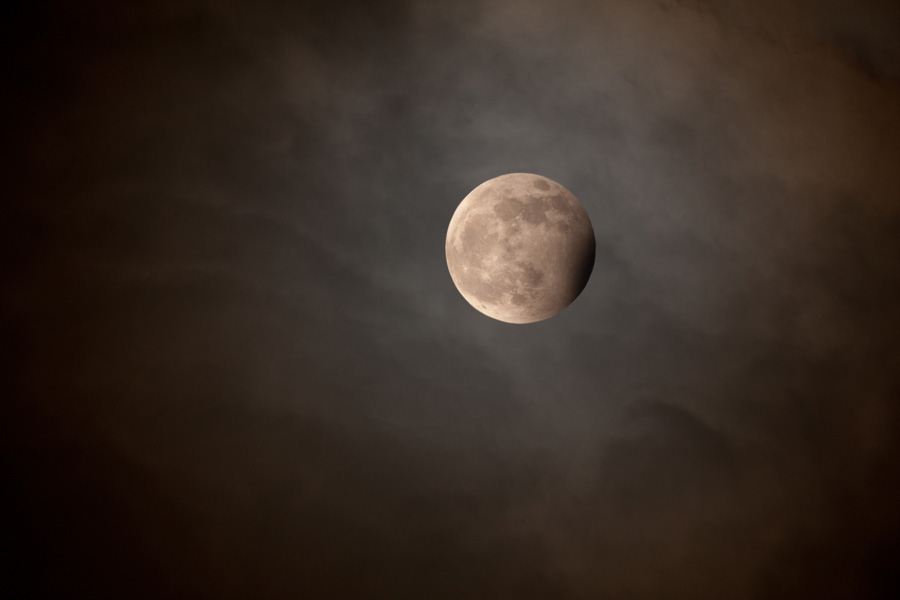
Blue Moon Eclipse
Credit & Copyright: Jean Paul Roux
Explanation: The International Year of Astronomy 2009 ended with a Blue Moon and a partial lunar eclipse, as the second Full Moon of December grazed the Earth's shadow on December 31st. The New Year's Eve Blue Moon eclipse was visible throughout Europe, Asia, Africa and parts of Alaska, captured in this two exposure composite in cloudy skies over Saint Bonnet de Mure, France. Playing across the Moon's southern reaches, the edge of Earth's umbra, or dark central shadow, appears on the right side along with the prominent ray crater Tycho. At maximum eclipse, the umbra covered only about 8 percent of the diameter of the lunar disk.
说明:当12月的第二轮满月在12月31日掠过地地球的阴影时,2009国际天文年以一轮蓝月亮和一次月偏食而结束。欧洲,亚洲,非洲以及阿拉斯加的部分地区都可以看到新年前夜的蓝月月食,这张影像是在法国圣博日牟礼上空的云雾天空下拍摄,由两张影像合成而得。地球的本影边缘穿过了月球的南部区域,或者说是黑暗的中央阴影与著名的第谷环形山一道出现在了月球的右侧。食分最大时,本影仅仅遮掩了月球盘面直径的8%。
2010 January 2

Blue Moon Eclipse
Credit & Copyright: Jean Paul Roux
Explanation: The International Year of Astronomy 2009 ended with a Blue Moon and a partial lunar eclipse, as the second Full Moon of December grazed the Earth's shadow on December 31st. The New Year's Eve Blue Moon eclipse was visible throughout Europe, Asia, Africa and parts of Alaska, captured in this two exposure composite in cloudy skies over Saint Bonnet de Mure, France. Playing across the Moon's southern reaches, the edge of Earth's umbra, or dark central shadow, appears on the right side along with the prominent ray crater Tycho. At maximum eclipse, the umbra covered only about 8 percent of the diameter of the lunar disk.
说明:当12月的第二轮满月在12月31日掠过地地球的阴影时,2009国际天文年以一轮蓝月亮和一次月偏食而结束。欧洲,亚洲,非洲以及阿拉斯加的部分地区都可以看到新年前夜的蓝月月食,这张影像是在法国圣博日牟礼上空的云雾天空下拍摄,由两张影像合成而得。地球的本影边缘穿过了月球的南部区域,或者说是黑暗的中央阴影与著名的第谷环形山一道出现在了月球的右侧。食分最大时,本影仅仅遮掩了月球盘面直径的8%。
2010 January 3
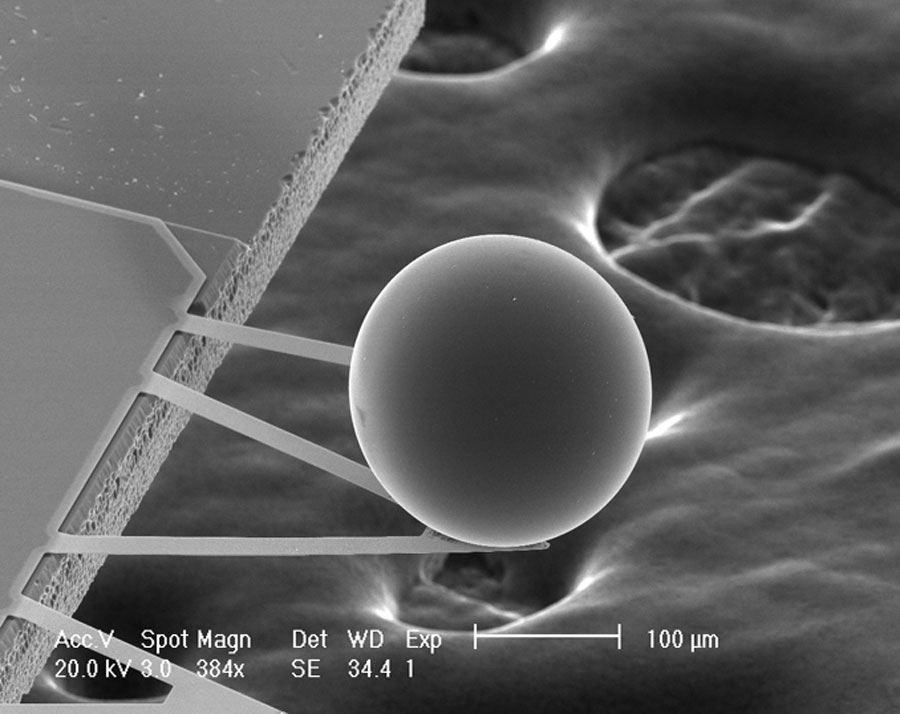
A Force from Empty Space: The Casimir Effect
Credit & Copyright: Umar Mohideen (U. California at Riverside)
Explanation: This tiny ball provides evidence that the universe will expand forever. Measuring slightly over one tenth of a millimeter, the ball moves toward a smooth plate in response to energy fluctuations in the vacuum of empty space. The attraction is known as the Casimir Effect, named for its discoverer, who, 50 years ago, was trying to understand why fluids like mayonnaise move so slowly. Today, evidence is accumulating that most of the energy density in the universe is in an unknown form dubbed dark energy. The form and genesis of dark energy is almost completely unknown, but postulated as related to vacuum fluctuations similar to the Casimir Effect but generated somehow by space itself. This vast and mysterious dark energy appears to gravitationally repel all matter and hence will likely cause the universe to expand forever. Understanding vacuum fluctuations is on the forefront of research not only to better understand our universe but also for stopping micro-mechanical machine parts from sticking together.
说明:这一小球体为宇宙将永远扩张下去提供了证据。经测得小球仅比毫米的十分之一稍大,会在真空能量起伏的推动下,向表面平坦的平滑区域移动。这种吸引力称为卡西米尔效应,它的发现者在五十年前提出这种效应,目的在了解为什么像蛋黄酱这种液体,流动的速度为何会如此之慢。现在已经有相当多的证据显示,宇宙中大部份能量密度的形态仍然未知,目前暂时被称为暗能量。虽然目前对暗能量的形态和起源几乎完全未知,不过科学家认为它可能和空间本身所产生的真空起伏有关,或者说是和卡西米尔效应可能有关联。这种巨大且神秘的暗能量,在重力上会排斥所有的物质,因此可能会造成宇宙不停地膨胀。了解真空起伏,是现在科学研究的最前沿题材,它不但有助于我们更好地了解宇宙,也可以帮助我们找出防止微机械零件粘着在一起的方法。
2010 January 3

A Force from Empty Space: The Casimir Effect
Credit & Copyright: Umar Mohideen (U. California at Riverside)
Explanation: This tiny ball provides evidence that the universe will expand forever. Measuring slightly over one tenth of a millimeter, the ball moves toward a smooth plate in response to energy fluctuations in the vacuum of empty space. The attraction is known as the Casimir Effect, named for its discoverer, who, 50 years ago, was trying to understand why fluids like mayonnaise move so slowly. Today, evidence is accumulating that most of the energy density in the universe is in an unknown form dubbed dark energy. The form and genesis of dark energy is almost completely unknown, but postulated as related to vacuum fluctuations similar to the Casimir Effect but generated somehow by space itself. This vast and mysterious dark energy appears to gravitationally repel all matter and hence will likely cause the universe to expand forever. Understanding vacuum fluctuations is on the forefront of research not only to better understand our universe but also for stopping micro-mechanical machine parts from sticking together.
说明:这一小球体为宇宙将永远扩张下去提供了证据。经测得小球仅比毫米的十分之一稍大,会在真空能量起伏的推动下,向表面平坦的平滑区域移动。这种吸引力称为卡西米尔效应,它的发现者在五十年前提出这种效应,目的在了解为什么像蛋黄酱这种液体,流动的速度为何会如此之慢。现在已经有相当多的证据显示,宇宙中大部份能量密度的形态仍然未知,目前暂时被称为暗能量。虽然目前对暗能量的形态和起源几乎完全未知,不过科学家认为它可能和空间本身所产生的真空起伏有关,或者说是和卡西米尔效应可能有关联。这种巨大且神秘的暗能量,在重力上会排斥所有的物质,因此可能会造成宇宙不停地膨胀。了解真空起伏,是现在科学研究的最前沿题材,它不但有助于我们更好地了解宇宙,也可以帮助我们找出防止微机械零件粘着在一起的方法。
2010 January 14
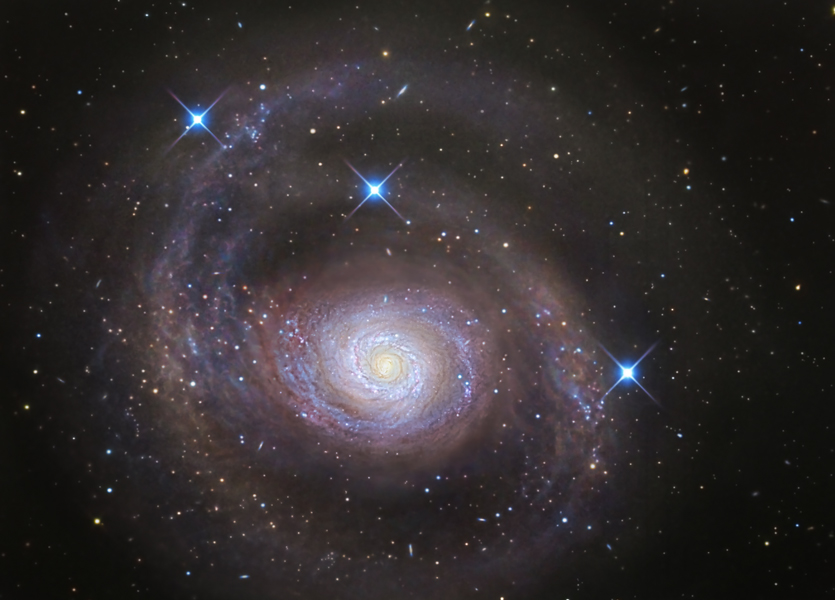
M94: A New Perspective
Image Credit & Copyright: R Jay Gabany (Blackbird Obs.)
Collaboration: I. Trujillo, I. Martinez-Valpuesta, D. Martinez-Delgado ( IAC); J. Penarrubia (IoA Cambridge); M. Pohlen (Cardiff)
Explanation: Beautiful island universe M94 lies a mere 15 million light-years distant in the northern constellation of the hunting dogs, Canes Venatici. A popular target for astronomers, the brighter inner part of the face-on spiral galaxy is about 30,000 light-years across. Traditionally, deep images have been interpreted as showing M94's inner spiral region surrounded by a faint, broad ring of stars. But a new multi-wavelength investigation has revealed previously undetected spiral arms sweeping across the outskirts of the galaxy's disk, an outer disk actively engaged in star formation. At optical wavelengths, M94's outer spiral arms are followed in this remarkable discovery image, processed to enhance the outer disk structure. Background galaxies are visible through the faint outer arms, while the three spiky foreground stars are in our own Milky Way galaxy.
说明:美丽的岛宇宙M94距离我们紧紧1,500万光年远,位于北方的猎狗座内。作为天文学家较为喜爱的观测目标,该正向旋涡星系较为明亮的内侧部分大约有3万光年宽。一般情况下,深空影像将解析M94内由恒星所组成又暗又宽的光环所包围的内侧旋涡区域。但是新的多波段测试揭示了未探测过的旋臂,它穿越过星系盘的外围,形成一个更外围的盘面,其内具有活跃的恒星诞生区域。在光学波段下,M94的外侧旋臂就如这张壮观的影像显示的一样,外侧盘面结构经过处理加强了色彩。可以透过昏暗的外侧旋臂看到背景星系,而前景中的三颗针芒似地恒星位于我们银河系内。
2010 January 14

M94: A New Perspective
Image Credit & Copyright: R Jay Gabany (Blackbird Obs.)
Collaboration: I. Trujillo, I. Martinez-Valpuesta, D. Martinez-Delgado ( IAC); J. Penarrubia (IoA Cambridge); M. Pohlen (Cardiff)
Explanation: Beautiful island universe M94 lies a mere 15 million light-years distant in the northern constellation of the hunting dogs, Canes Venatici. A popular target for astronomers, the brighter inner part of the face-on spiral galaxy is about 30,000 light-years across. Traditionally, deep images have been interpreted as showing M94's inner spiral region surrounded by a faint, broad ring of stars. But a new multi-wavelength investigation has revealed previously undetected spiral arms sweeping across the outskirts of the galaxy's disk, an outer disk actively engaged in star formation. At optical wavelengths, M94's outer spiral arms are followed in this remarkable discovery image, processed to enhance the outer disk structure. Background galaxies are visible through the faint outer arms, while the three spiky foreground stars are in our own Milky Way galaxy.
说明:美丽的岛宇宙M94距离我们紧紧1,500万光年远,位于北方的猎狗座内。作为天文学家较为喜爱的观测目标,该正向旋涡星系较为明亮的内侧部分大约有3万光年宽。一般情况下,深空影像将解析M94内由恒星所组成又暗又宽的光环所包围的内侧旋涡区域。但是新的多波段测试揭示了未探测过的旋臂,它穿越过星系盘的外围,形成一个更外围的盘面,其内具有活跃的恒星诞生区域。在光学波段下,M94的外侧旋臂就如这张壮观的影像显示的一样,外侧盘面结构经过处理加强了色彩。可以透过昏暗的外侧旋臂看到背景星系,而前景中的三颗针芒似地恒星位于我们银河系内。
2010 January 15
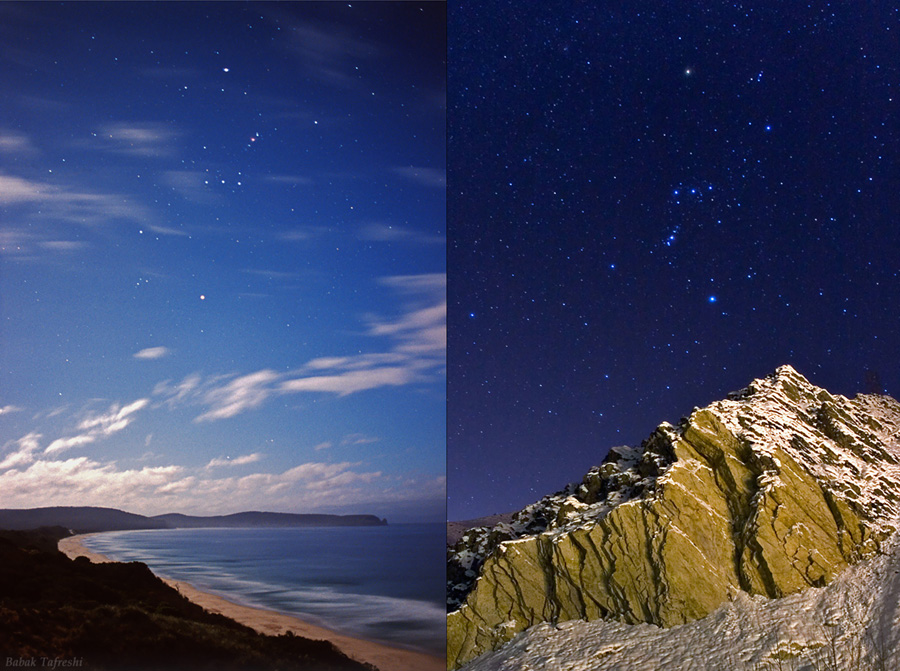
Scenes from Two Hemispheres
Credit & Copyright: Babak Tafreshi (TWAN)
Explanation: The stars of a summer night on the left and the winter night sky on the right are the same stars. In fact, both pictures were taken in late December and have similar fields of view. The left panel shows a scene from a beach on Bruny Island off the coast of Tasmania, Australia, while the right panel features the sky over the snowy Alborz Mountains of northern Iran. But if the sky on one side still looks unfamiliar to you, just put your cursor over the image to see an alternate version. The alternate image will trace the outlines of the familiar constellation of Orion, as seen from the southern and northern hemispheres of planet Earth.
说明:左侧夏夜星空中的恒星与右侧冬季星空中的恒星是同样的恒星。事实上,两张照片都拍摄于12月末,显示了相同的区域。左侧画面显示了澳大利亚,塔斯马尼亚海岸布鲁尼岛的海岸线,右侧画面出现在伊朗北部,现实的是白雪覆盖的厄尔布尔士山脉上空的星空。但任何一侧的天空如果对你来说还不熟悉的话,那么就将你的鼠标放在影像上,就会出现一张替代的影像。这张替代的影像将勾勒出猎户座熟悉的轮廓,在地球的南北半球都能看到它。
2010 January 15

Scenes from Two Hemispheres
Credit & Copyright: Babak Tafreshi (TWAN)
Explanation: The stars of a summer night on the left and the winter night sky on the right are the same stars. In fact, both pictures were taken in late December and have similar fields of view. The left panel shows a scene from a beach on Bruny Island off the coast of Tasmania, Australia, while the right panel features the sky over the snowy Alborz Mountains of northern Iran. But if the sky on one side still looks unfamiliar to you, just put your cursor over the image to see an alternate version. The alternate image will trace the outlines of the familiar constellation of Orion, as seen from the southern and northern hemispheres of planet Earth.
说明:左侧夏夜星空中的恒星与右侧冬季星空中的恒星是同样的恒星。事实上,两张照片都拍摄于12月末,显示了相同的区域。左侧画面显示了澳大利亚,塔斯马尼亚海岸布鲁尼岛的海岸线,右侧画面出现在伊朗北部,现实的是白雪覆盖的厄尔布尔士山脉上空的星空。但任何一侧的天空如果对你来说还不熟悉的话,那么就将你的鼠标放在影像上,就会出现一张替代的影像。这张替代的影像将勾勒出猎户座熟悉的轮廓,在地球的南北半球都能看到它。
2010 January 17

Atlantis to Orbit
Credit: NASA
Explanation: Birds don't fly this high. Airplanes don't go this fast. The Statue of Liberty weighs less. No species other than human can even comprehend what is going on, nor could any human just a millennium ago. The launch of a rocket bound for space is an event that inspires awe and challenges description. Pictured above, the Space Shuttle Atlantis lifted off to visit the International Space Station during the early morning hours of 2001 July 12. From a standing start, the two million kilogram rocket ship left to circle the Earth where the outside air is too thin to breathe and where there is little noticeable onboard gravity. Rockets bound for space are now launched from somewhere on Earth about once a week.
说明:鸟儿不能飞得如此之高,飞机不能飞的如此之快。自由女神重量更轻些。没有别的物种能像人类一样理解正在发生的事情,就像人类在一千年前一样不能理解。发射升空的捆绑火箭,目标直指太空,这是一件鼓舞人心并富有挑战的事情。上面的影像拍摄于2001年7月12日清晨时分,亚特兰蒂斯号航天飞机升空后向国际空间站进发。从发射开始,火箭将飞到200万公里的高空中并绕地球飞行,那里空气稀薄难以呼吸,而且几乎没有引力作用。飞向太空的捆绑火箭如今在地球上一些地方每一周都会有一次发射升空。
2010 January 17

Atlantis to Orbit
Credit: NASA
Explanation: Birds don't fly this high. Airplanes don't go this fast. The Statue of Liberty weighs less. No species other than human can even comprehend what is going on, nor could any human just a millennium ago. The launch of a rocket bound for space is an event that inspires awe and challenges description. Pictured above, the Space Shuttle Atlantis lifted off to visit the International Space Station during the early morning hours of 2001 July 12. From a standing start, the two million kilogram rocket ship left to circle the Earth where the outside air is too thin to breathe and where there is little noticeable onboard gravity. Rockets bound for space are now launched from somewhere on Earth about once a week.
说明:鸟儿不能飞得如此之高,飞机不能飞的如此之快。自由女神重量更轻些。没有别的物种能像人类一样理解正在发生的事情,就像人类在一千年前一样不能理解。发射升空的捆绑火箭,目标直指太空,这是一件鼓舞人心并富有挑战的事情。上面的影像拍摄于2001年7月12日清晨时分,亚特兰蒂斯号航天飞机升空后向国际空间站进发。从发射开始,火箭将飞到200万公里的高空中并绕地球飞行,那里空气稀薄难以呼吸,而且几乎没有引力作用。飞向太空的捆绑火箭如今在地球上一些地方每一周都会有一次发射升空。
2010 January 23

Eclipses in the Shade
Credit & Copyright: Stephan Heinsius
Explanation: Eclipses are everywhere in this shady scene. The picture was taken on the Indian Ocean atoll island of Ellaidhoo, Maldives, on January 15, during the longest annular solar eclipse for the next 1,000 years. Tall palm trees provided the shade. Their many crossed leaves created gaps that acted like pinhole cameras, scattering recognizable eclipse images across the white sands of a tropical garden near the beach. From this idyllic location near the centerline of the Moon's shadow track, the ring of fire or annular phase of the eclipse lasted about 10 minutes and 55 seconds.
说明:在这片阴影场景里到处都是日食阴影。影像拍摄于1月15日千年最长日环食期间,地点位于印度洋,马尔代夫埃拉胡岛上。高大的棕榈树形成了这些阴影。光线穿过了树叶,形成了间隙,就像针孔相机拍摄到的一样,将日食影像散射到沙滩附近的热带花园的白沙地上。从位于月球阴影轨迹的中央附近位置看,火环或者环食阶段持续的时间长达10分55秒。
2010 January 23

Eclipses in the Shade
Credit & Copyright: Stephan Heinsius
Explanation: Eclipses are everywhere in this shady scene. The picture was taken on the Indian Ocean atoll island of Ellaidhoo, Maldives, on January 15, during the longest annular solar eclipse for the next 1,000 years. Tall palm trees provided the shade. Their many crossed leaves created gaps that acted like pinhole cameras, scattering recognizable eclipse images across the white sands of a tropical garden near the beach. From this idyllic location near the centerline of the Moon's shadow track, the ring of fire or annular phase of the eclipse lasted about 10 minutes and 55 seconds.
说明:在这片阴影场景里到处都是日食阴影。影像拍摄于1月15日千年最长日环食期间,地点位于印度洋,马尔代夫埃拉胡岛上。高大的棕榈树形成了这些阴影。光线穿过了树叶,形成了间隙,就像针孔相机拍摄到的一样,将日食影像散射到沙滩附近的热带花园的白沙地上。从位于月球阴影轨迹的中央附近位置看,火环或者环食阶段持续的时间长达10分55秒。
2010 January 26
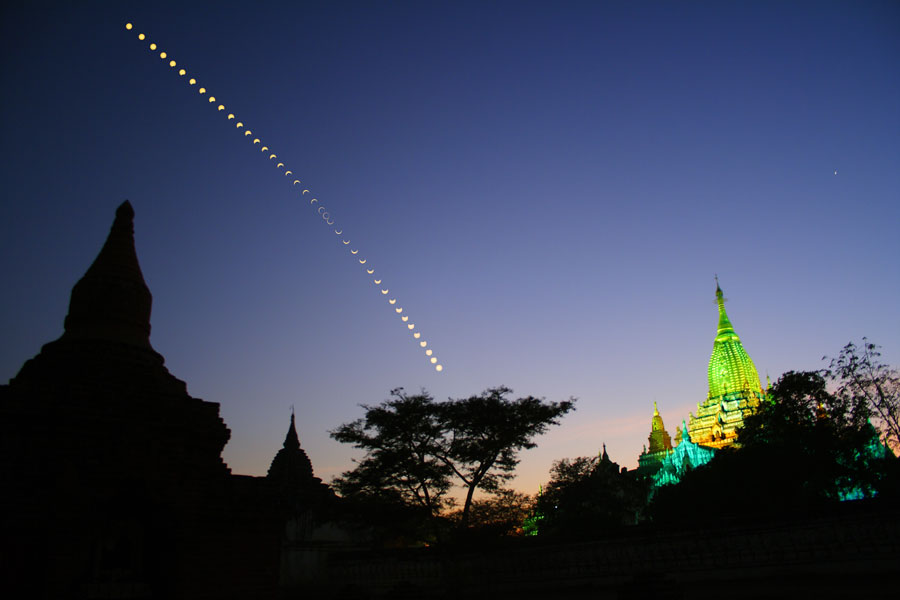
Annular Eclipse Over Myanmar
Credit & Copyright: Wei Loon Chin
Explanation: A hole crossed the Sun for a few minutes this month, as seen across a thin swath of planet Earth. The event on January 15 was actually an annular solar eclipse, and the hole was really Earth's Moon, an object whose dark half may appear even darker when compared to the tremendously bright Sun. The Moon was too far from Earth to create a total solar eclipse, but instead left well placed observers with a bright surrounding circle called the ring of fire. Pictured above was a complete solar annular eclipse sequence as seen above the Ananda Temple in Bagan, Myanmar. The image of the ancient temple, built around the year 1100, was taken after sunset on the same day of the eclipse. The next solar eclipse will be a total solar eclipse during 2010 July.
说明:本月一道狭长的阴影穿过了地球,而同时太阳的盘面上出现了一个洞,并持续了数分钟时间。1月15日发生的事件实际上就是一次日环食,而太阳表面出现的黑洞就是月球,当与异常明亮的太阳相比,已经黑暗了一半的天体看上去更暗了。月球距离地球太远,因而不能形成一次日全食,取而代之的是让合适位置上的观测者们看到一个明亮的光环—火焰环。上面这张影像是位于缅甸蒲甘阿难陀寺上空所拍摄到的一系列完整的日环食影像。这一古寺建造于公元1100年左右,影像拍摄于日食当天日落之后。下一次日食是2010年7月发生的日全食。
2010 January 26

Annular Eclipse Over Myanmar
Credit & Copyright: Wei Loon Chin
Explanation: A hole crossed the Sun for a few minutes this month, as seen across a thin swath of planet Earth. The event on January 15 was actually an annular solar eclipse, and the hole was really Earth's Moon, an object whose dark half may appear even darker when compared to the tremendously bright Sun. The Moon was too far from Earth to create a total solar eclipse, but instead left well placed observers with a bright surrounding circle called the ring of fire. Pictured above was a complete solar annular eclipse sequence as seen above the Ananda Temple in Bagan, Myanmar. The image of the ancient temple, built around the year 1100, was taken after sunset on the same day of the eclipse. The next solar eclipse will be a total solar eclipse during 2010 July.
说明:本月一道狭长的阴影穿过了地球,而同时太阳的盘面上出现了一个洞,并持续了数分钟时间。1月15日发生的事件实际上就是一次日环食,而太阳表面出现的黑洞就是月球,当与异常明亮的太阳相比,已经黑暗了一半的天体看上去更暗了。月球距离地球太远,因而不能形成一次日全食,取而代之的是让合适位置上的观测者们看到一个明亮的光环—火焰环。上面这张影像是位于缅甸蒲甘阿难陀寺上空所拍摄到的一系列完整的日环食影像。这一古寺建造于公元1100年左右,影像拍摄于日食当天日落之后。下一次日食是2010年7月发生的日全食。
2010 January 28

Kemble's Cascade
Credit & Copyright: Processing - Noel Carboni, Imaging - Greg Parker, New Forest Observatory
Explanation: An asterism is just a recognized pattern of stars that is not one the 88 official constellations. For example, one of the most famous (and largest) asterisms is the Big Dipper within the constellation Ursa Major. But this pretty chain of stars, visible with binoculars towards the long-necked constellation of Camelopardalis, is also a recognized asterism. Known as Kemble's Cascade, it contains about 20 stars nearly in a row, stretching over five times the width of a full moon. Tumbling from the upper right to lower left in the picture, Kemble's Cascade was made popular by astronomy enthusiast Lucian Kemble. The bright object at the lower left is the relatively compact open cluster of stars, NGC 1502.
说明:星宫就是恒星所组成的公认形状,它并不是全天88星座之一。例如,最著名(最大)的星宫之一就是北斗七星,位于大熊座内。但是影像中出现的这一道美丽的恒星链被称为甘伯串珠,位于脖子长长的鹿豹座内,利用双筒望远镜就能看到,它也是一个易辨别的星宫,其中含有近20颗恒星,排列成近似一条线,一直延伸开来超过了5倍满月的宽度。从影像的右上角一直到左下角,甘伯串珠以天文爱好者卢西恩.甘伯命名。左下角明亮的天体就是相对紧凑的疏散星团-NGC1502。
2010 January 28

Kemble's Cascade
Credit & Copyright: Processing - Noel Carboni, Imaging - Greg Parker, New Forest Observatory
Explanation: An asterism is just a recognized pattern of stars that is not one the 88 official constellations. For example, one of the most famous (and largest) asterisms is the Big Dipper within the constellation Ursa Major. But this pretty chain of stars, visible with binoculars towards the long-necked constellation of Camelopardalis, is also a recognized asterism. Known as Kemble's Cascade, it contains about 20 stars nearly in a row, stretching over five times the width of a full moon. Tumbling from the upper right to lower left in the picture, Kemble's Cascade was made popular by astronomy enthusiast Lucian Kemble. The bright object at the lower left is the relatively compact open cluster of stars, NGC 1502.
说明:星宫就是恒星所组成的公认形状,它并不是全天88星座之一。例如,最著名(最大)的星宫之一就是北斗七星,位于大熊座内。但是影像中出现的这一道美丽的恒星链被称为甘伯串珠,位于脖子长长的鹿豹座内,利用双筒望远镜就能看到,它也是一个易辨别的星宫,其中含有近20颗恒星,排列成近似一条线,一直延伸开来超过了5倍满月的宽度。从影像的右上角一直到左下角,甘伯串珠以天文爱好者卢西恩.甘伯命名。左下角明亮的天体就是相对紧凑的疏散星团-NGC1502。
2010 February 2
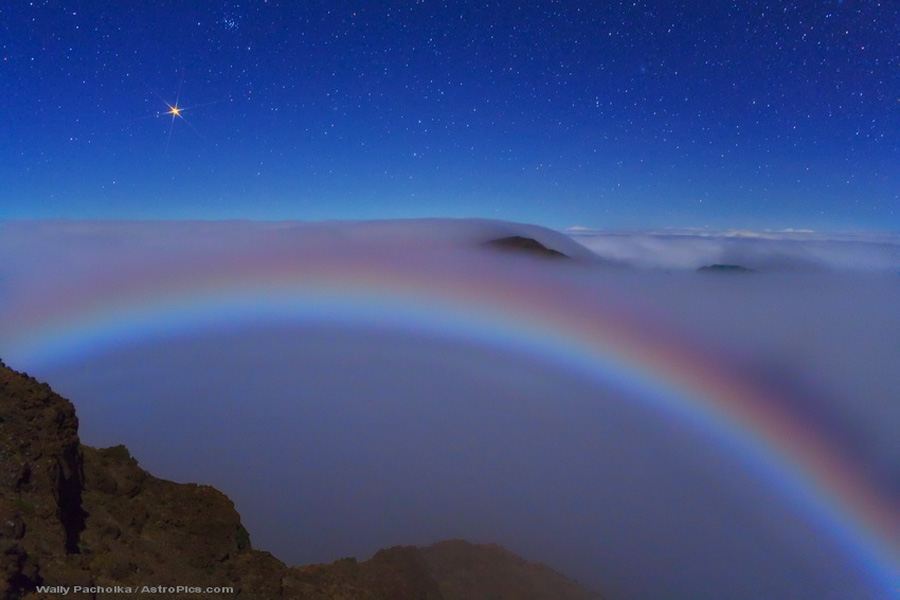
Mars and a Colorful Lunar Fog Bow
Credit & Copyright: Wally Pacholka (AstroPics.com, TWAN)
Explanation: Even from the top of a volcanic crater, this vista was unusual. For one reason, Mars was dazzlingly bright two weeks ago, when this picture was taken, as it was nearing its brightest time of the entire year. Mars, on the far upper left, is the brightest object in the above picture. The brightness of the red planet peaked last week near when Mars reached opposition, the time when Earth and Mars are closest together in their orbits. Arching across the lower part of the image is a rare lunar fog bow. Unlike a more commonly seen rainbow, which is created by sunlight reflected prismatically by falling rain, this fog bow was created by moonlight reflected by the small water drops that compose fog. Although most fog bows appear white, all of the colors of the rainbow were somehow visible here. The above image was taken from high atop Haleakala, a huge volcano in Hawaii, USA.
说明:即使从火山顶看,这片景色还那么与众不同。一个原因是,在两周前火星就已经明亮地闪烁在天空中了,当这张影像拍摄的时候,它已经接近了全年中最亮的时间。在上面这张影像中最明亮的天体就是左上方的火星。这颗红色行星的亮度在上周火星冲日时达到最亮,也就是在地球和火星的轨道上二者距离最近。在影像的下方有一道弧,那是很罕见的月光雾虹。与较为常见的彩虹不同,彩虹是由阳光经过棱镜状的雨滴反射后而得,这道雾虹是月光经过雾气中的小水滴反射而得。尽管大多数雾虹显示成白色,但也有时候彩虹所有的颜色都会出现。上面的影像是在美国 夏威夷,哈力卡拉火山山顶拍摄。
2010 February 2

Mars and a Colorful Lunar Fog Bow
Credit & Copyright: Wally Pacholka (AstroPics.com, TWAN)
Explanation: Even from the top of a volcanic crater, this vista was unusual. For one reason, Mars was dazzlingly bright two weeks ago, when this picture was taken, as it was nearing its brightest time of the entire year. Mars, on the far upper left, is the brightest object in the above picture. The brightness of the red planet peaked last week near when Mars reached opposition, the time when Earth and Mars are closest together in their orbits. Arching across the lower part of the image is a rare lunar fog bow. Unlike a more commonly seen rainbow, which is created by sunlight reflected prismatically by falling rain, this fog bow was created by moonlight reflected by the small water drops that compose fog. Although most fog bows appear white, all of the colors of the rainbow were somehow visible here. The above image was taken from high atop Haleakala, a huge volcano in Hawaii, USA.
说明:即使从火山顶看,这片景色还那么与众不同。一个原因是,在两周前火星就已经明亮地闪烁在天空中了,当这张影像拍摄的时候,它已经接近了全年中最亮的时间。在上面这张影像中最明亮的天体就是左上方的火星。这颗红色行星的亮度在上周火星冲日时达到最亮,也就是在地球和火星的轨道上二者距离最近。在影像的下方有一道弧,那是很罕见的月光雾虹。与较为常见的彩虹不同,彩虹是由阳光经过棱镜状的雨滴反射后而得,这道雾虹是月光经过雾气中的小水滴反射而得。尽管大多数雾虹显示成白色,但也有时候彩虹所有的颜色都会出现。上面的影像是在美国 夏威夷,哈力卡拉火山山顶拍摄。
2010 February 3
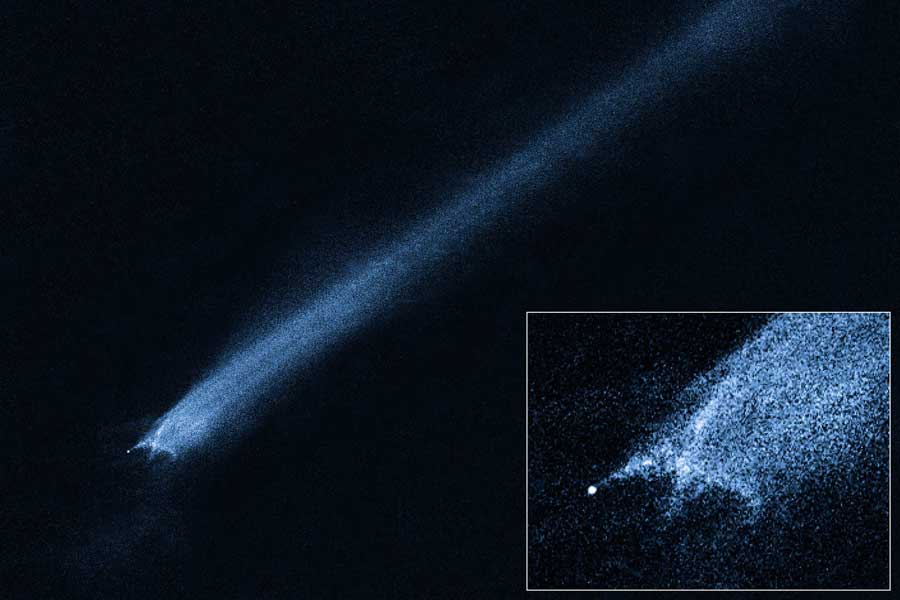
P/2010 A2: Unusual Asteroid Tail Implies Powerful Collision
Credit: NASA, ESA, D. Jewitt (UCLA)
Explanation: What is this strange object? First discovered on ground based LINEAR images on January 6, the object appeared unusual enough to investigate further with the Hubble Space Telescope last week. Pictured above, what Hubble saw indicates that P/2010 A2 is unlike any object ever seen before. At first glance, the object appears to have the tail of a comet. Close inspection, however, shows a 140-meter nucleus offset from the tail center, very unusual structure near the nucleus, and no discernable gas in the tail. Knowing that the object orbits in the asteroid belt between Mars and Jupiter, a preliminary hypothesis that appears to explain all of the known clues is that P/2010 A2 is the debris left over from a recent collision between two small asteroids. If true, the collision likely occurred at over 15,000 kilometers per hour -- five times the speed of a rifle bullet -- and liberated energy in excess of a nuclear bomb. Pressure from sunlight would then spread out the debris into a trailing tail. Future study of P/2010 A2 may better indicate the nature of the progenitor collision and may help humanity better understand the early years of our Solar System, when many similar collisions occurred.
说明:这颗奇怪的物体是什么?1月6号首次由近地小行星研究计划LINEAR发现,但是在上周哈勃太空望远镜拍摄到的影像中,该天体看上去与众不同、更具有探索意义。上面的影像中,哈勃所见到的P/2010A2一点都不像曾经所见过的天体。该天体乍一看去是有一条彗尾的彗星。仔细检查发现,长达140米的核心与尾部中心分离开来,而且核心附近结构异常,并且在尾部有不可辨别的气体。现在知道天体的轨道位于火星和木星之间的小行星带,有一种说法就是P/2010A2是两颗小行星最近发生了一次碰撞后产生的。如果这是事实,碰撞发生时每小时时速1.5万公里,这是步枪子弹速度的5倍,因此释放的能量超过了一次核爆炸。太阳光的压力将碎片吹向尾部。对于P/2010A2的后续研究将更好地了解先前的碰撞,也将帮助人类更好地了解我们的早期太阳系。
2010 February 3

P/2010 A2: Unusual Asteroid Tail Implies Powerful Collision
Credit: NASA, ESA, D. Jewitt (UCLA)
Explanation: What is this strange object? First discovered on ground based LINEAR images on January 6, the object appeared unusual enough to investigate further with the Hubble Space Telescope last week. Pictured above, what Hubble saw indicates that P/2010 A2 is unlike any object ever seen before. At first glance, the object appears to have the tail of a comet. Close inspection, however, shows a 140-meter nucleus offset from the tail center, very unusual structure near the nucleus, and no discernable gas in the tail. Knowing that the object orbits in the asteroid belt between Mars and Jupiter, a preliminary hypothesis that appears to explain all of the known clues is that P/2010 A2 is the debris left over from a recent collision between two small asteroids. If true, the collision likely occurred at over 15,000 kilometers per hour -- five times the speed of a rifle bullet -- and liberated energy in excess of a nuclear bomb. Pressure from sunlight would then spread out the debris into a trailing tail. Future study of P/2010 A2 may better indicate the nature of the progenitor collision and may help humanity better understand the early years of our Solar System, when many similar collisions occurred.
说明:这颗奇怪的物体是什么?1月6号首次由近地小行星研究计划LINEAR发现,但是在上周哈勃太空望远镜拍摄到的影像中,该天体看上去与众不同、更具有探索意义。上面的影像中,哈勃所见到的P/2010A2一点都不像曾经所见过的天体。该天体乍一看去是有一条彗尾的彗星。仔细检查发现,长达140米的核心与尾部中心分离开来,而且核心附近结构异常,并且在尾部有不可辨别的气体。现在知道天体的轨道位于火星和木星之间的小行星带,有一种说法就是P/2010A2是两颗小行星最近发生了一次碰撞后产生的。如果这是事实,碰撞发生时每小时时速1.5万公里,这是步枪子弹速度的5倍,因此释放的能量超过了一次核爆炸。太阳光的压力将碎片吹向尾部。对于P/2010A2的后续研究将更好地了解先前的碰撞,也将帮助人类更好地了解我们的早期太阳系。
2010 February 6

Hong Kong Sky
Credit & Copyright: Peter Lau
Explanation: This remarkable scene combines multiple exposures recorded on the evening of January 18th from a waterside perspective in Hong Kong, China. It follows a young crescent Moon, with brilliant planet Jupiter to its left, as they set together in the western sky. Their two luminous trails are faintly paralleled by trails of background stars. But easier to pick out are the short, bright airplane trails converging toward the horizon and the Hong Kong International Airport that seem to offer a frenzied imitation of the celestial tracks. Of course, the reflection of city lights and boat traffic follows the water's surface. Streaking car lights define the span of the cable-stayed Ting Kau bridge.
说明:这片壮观的场景合成了多张曝光影像,拍摄地点位于中国香港的海边,时间为1月18日晚。影像中出现了一轮新月,在它的左侧是明亮的木星,它们共同出现在西方的天空中。两道明亮的轨迹,与背景恒星形成的昏暗轨迹平行。但是在影像中很容易看出短而明亮的条纹是飞机的飞行轨迹,它们共同指向地平线也就是香港国际机场方向,看上去就像是模仿天体轨迹品一样。当然影像中还显示了城市的灯光效应,以及轮船在湖面上通过。汽车灯光轨迹显示了用钢缆固定的汀九大桥的长度。
2010 February 6

Hong Kong Sky
Credit & Copyright: Peter Lau
Explanation: This remarkable scene combines multiple exposures recorded on the evening of January 18th from a waterside perspective in Hong Kong, China. It follows a young crescent Moon, with brilliant planet Jupiter to its left, as they set together in the western sky. Their two luminous trails are faintly paralleled by trails of background stars. But easier to pick out are the short, bright airplane trails converging toward the horizon and the Hong Kong International Airport that seem to offer a frenzied imitation of the celestial tracks. Of course, the reflection of city lights and boat traffic follows the water's surface. Streaking car lights define the span of the cable-stayed Ting Kau bridge.
说明:这片壮观的场景合成了多张曝光影像,拍摄地点位于中国香港的海边,时间为1月18日晚。影像中出现了一轮新月,在它的左侧是明亮的木星,它们共同出现在西方的天空中。两道明亮的轨迹,与背景恒星形成的昏暗轨迹平行。但是在影像中很容易看出短而明亮的条纹是飞机的飞行轨迹,它们共同指向地平线也就是香港国际机场方向,看上去就像是模仿天体轨迹品一样。当然影像中还显示了城市的灯光效应,以及轮船在湖面上通过。汽车灯光轨迹显示了用钢缆固定的汀九大桥的长度。
2010 February 7

The Einstein Cross Gravitational Lens
Credit & Copyright: J. Rhoads (ASU) et al., WIYN, AURA, NOAO, NSF Explanation: Most galaxies have a single nucleus -- does this galaxy have four? The strange answer leads astronomers to conclude that the nucleus of the surrounding galaxy is not even visible in this image. The central cloverleaf is rather light emitted from a background quasar. The gravitational field of the visible foreground galaxy breaks light from this distant quasar into four distinct images. The quasar must be properly aligned behind the center of a massive galaxy for a mirage like this to be evident. The general effect is known as gravitational lensing, and this specific case is known as the Einstein Cross. Stranger still, the images of the Einstein Cross vary in relative brightness, enhanced occasionally by the additional gravitational microlensing effect of specific stars in the foreground galaxy.
说明:大多数星系只有一个单独的星系核—但这个星系难道有4个星系核吗?这奇怪的答案让天文学家断定该星系的星系核没有在这张影像中出现。中央的四叶形类星体发出的光实际上背景类星体发出的光。前景可见星系的重力场将遥远类星体发出的光分裂成4张不同的影像。类星体必须恰好排列在中央大质量星系的后方,形成一条直线就能出现这种类似的海市蜃楼现象。通常该作用被称为重力透镜,并且这一特殊的事件被称为爱因斯坦十字架效应。但更奇怪的是,爱因斯坦十字架亮度有些变化,这是因为前景星系特殊恒星产生的引力微透镜效应,亮度偶然会增强。
2010 February 7

The Einstein Cross Gravitational Lens
Credit & Copyright: J. Rhoads (ASU) et al., WIYN, AURA, NOAO, NSF Explanation: Most galaxies have a single nucleus -- does this galaxy have four? The strange answer leads astronomers to conclude that the nucleus of the surrounding galaxy is not even visible in this image. The central cloverleaf is rather light emitted from a background quasar. The gravitational field of the visible foreground galaxy breaks light from this distant quasar into four distinct images. The quasar must be properly aligned behind the center of a massive galaxy for a mirage like this to be evident. The general effect is known as gravitational lensing, and this specific case is known as the Einstein Cross. Stranger still, the images of the Einstein Cross vary in relative brightness, enhanced occasionally by the additional gravitational microlensing effect of specific stars in the foreground galaxy.
说明:大多数星系只有一个单独的星系核—但这个星系难道有4个星系核吗?这奇怪的答案让天文学家断定该星系的星系核没有在这张影像中出现。中央的四叶形类星体发出的光实际上背景类星体发出的光。前景可见星系的重力场将遥远类星体发出的光分裂成4张不同的影像。类星体必须恰好排列在中央大质量星系的后方,形成一条直线就能出现这种类似的海市蜃楼现象。通常该作用被称为重力透镜,并且这一特殊的事件被称为爱因斯坦十字架效应。但更奇怪的是,爱因斯坦十字架亮度有些变化,这是因为前景星系特殊恒星产生的引力微透镜效应,亮度偶然会增强。